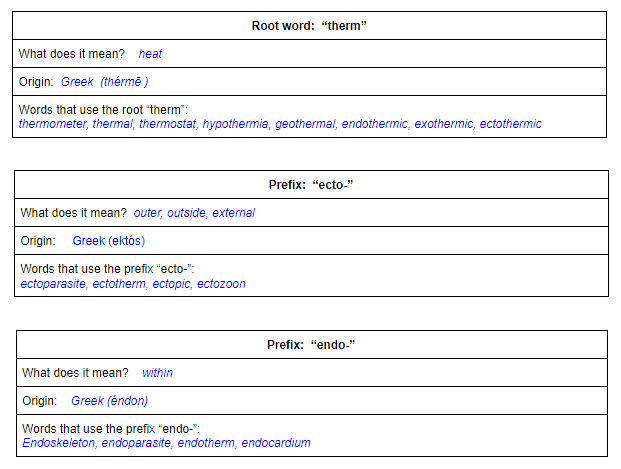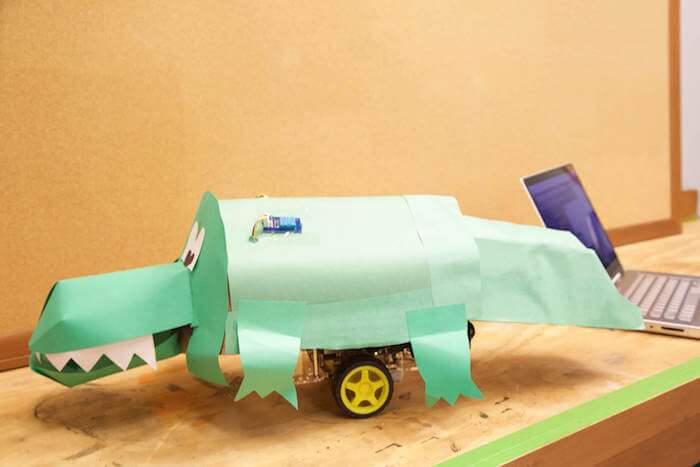Teacher Instructions
Students will demonstrate an understanding of the characteristics of cold-blooded animals by programming a robot to behave like a cold-blooded animal.
Set Up:
- Copy student handouts
- Find environment with at least two different temperatures (see project supply list)
Introduction:
- Ask students, “Does your temperature mimic the temperature outside? If it is 32°F outside, is your body temperature 32°F as well?”
- Tell the students, “Warm-blooded animals, such as mammals and birds, can make and regulate their own body heat. Cold-blooded animals, such as reptiles, amphibians, and fish, become hotter or colder depending on the temperature outside.
- Tell the students, “Today we are going to learn about cold-blooded animals and program the GoPiGo to act like a cold-blooded animal.”
- First, students will determine the meaning of the words endotherm and ectotherm by learning about the word parts. Divide the students into groups of 2-3 and distribute the Cold-Blooded vs Warm-Blooded Animals student handouts as well a dictionary for each group.
- Students will complete the first page of the student handouts (word parts) with their partner(s).
- As a class, discuss the meanings of the word parts they looked up. Write the answers on the board so that students can correct misconceptions. Sample responses are pictured below.
- Students will then read the Cold-Blooded vs Warm-Blooded Animals passage with their partner and take notes on the graphic organizer. If needed, read and take notes on the passage as a class.
- Ask the students, “How do you control temperature in your house?” (Thermostat) “What does the thermostat do?” Discuss how a thermostat regulates temperature in a home.
- Tell the students, “The hypothalamus is a portion of the brain in vertebrate animals that helps to maintain body temperature. For example, if you get too hot, your brain sends signals to your sweat glands to produce sweat to cool you off. If you become too cold, your brain sends signals to your muscles to make you shiver to help warm you up.”
- Tell the students, “Now, you are going to program the GoPiGo robot to behave like a cold-blooded animal and react to changes in body temperature. What type of sensor is needed to create a thermostat / hypothalamus for the robot?” (temperature sensor)
- Students will work in groups of 2-3 to attach the DHT sensor, program, and test, and run their GoPiGo by following the directions on the student handout.

Closure:
- Students will complete the Exit Pass.
- If time, students will share their responses to the last question on the Exit Pass - “Why might it be useful for a robot be able to move to a new environment based on its temperature?”
Extension:
- Students transform their GoPiGo robot into an animal using craft materials such as construction paper and cardboard. Students create an animal profile to describe other characteristics of cold-blooded animals used in their design.
- Students add a Grove light sensor to their GoPiGo robot and program the robot to react to light as well as temperature. Students will program the robot to seek out areas with more light when too cold and areas with less light when too warm.


Last modified: Friday, 30 October 2020, 1:39 PM